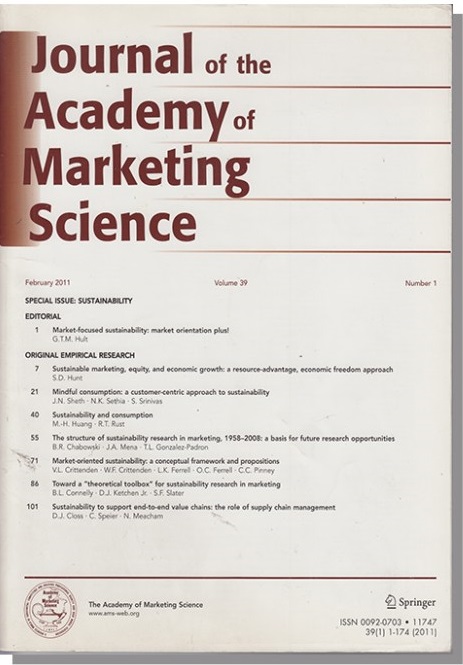明白了吗?用视觉来表现理论
IF 9.5
1区 管理学
Q1 BUSINESS
引用次数: 0
摘要
可视化可以辅助理论叙述的过程。虽然大多数研究人员都意识到图形在有效地传达理论本质方面的好处,但许多人缺乏创建这些图形的视觉语法和工具。这篇社论提出了一个五步迭代过程,NETSA,以协助理论可视化的过程。本文章由计算机程序翻译,如有差异,请以英文原文为准。
Get the picture? Using visuals to represent theory
Visualization can assist the process of narrating theory. Although most researchers realize the benefit of figures to efficiently and effectively convey the essence of a theory, many lack the visual grammar and tools to create those figures. This editorial presents a five-step iterative process, NETSA, to assist the process of theory visualization.
求助全文
通过发布文献求助,成功后即可免费获取论文全文。
去求助
来源期刊
CiteScore
30.00
自引率
7.10%
发文量
82
期刊介绍:
JAMS, also known as The Journal of the Academy of Marketing Science, plays a crucial role in bridging the gap between scholarly research and practical application in the realm of marketing. Its primary objective is to study and enhance marketing practices by publishing research-driven articles.
When manuscripts are submitted to JAMS for publication, they are evaluated based on their potential to contribute to the advancement of marketing science and practice.

 求助内容:
求助内容: 应助结果提醒方式:
应助结果提醒方式:


